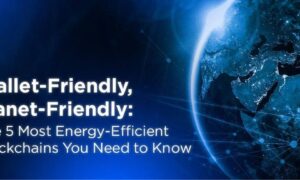Tezos has long been a contender in the alt Layer 1 blockchain race, initially carving out its niche with a promise of on-chain governance and self-amendment to avoid hard forks that plague other blockchains. Originally designed as a monolithic system, Tezos required every node to replicate all activity, a model that, while robust in securing a decentralized network, presents significant scalability challenges. As network activity escalates, so too do the demands on computing power and bandwidth, pushing the boundaries of sustainability and potentially risking centralization, where only operators with substantial resources can effectively participate.
To address these issues while maintaining decentralization, Tezos has transitioned from a monolithic to a modular architecture. This “modu-lithic” approach intends to offer substantial performance improvements while fully inheriting the security and censorship resistance of the L1. This approach could significantly enhance its overall performance and allow Tezos to achieve a delicate balance between the benefits of both monolithic and modular systems. Now, Let’s see how they plan to do it.
How Tezos Smart Rollups Improve Scalability Without Diluting Decentralization?
Tezos smart rollups are rolling out a series of upgrades that will improve scalability without diluting decentralization.
- Data Availability Layer (DAL): On a smart rollup, when the vision is for vertical and horizontal scaling, data must be readily available as and when required without diluting decentralization and maintaining the speed at the same time. To achieve this, Tezos smart rollups integrate DAL or the Data Availability Layer. The DAL provides the guarantee that the data will be available by relying on the bakers’ consensus, which only posts a part of the data. Through the use of ERASURE Coding and KZG Commitments, the data can be quickly restored.
At the same time, DAL will be further optimized by data availability sharding, where the bakers will be storing and keeping the data based on their stakes and making them readily available as and when needed. Hence, this significantly improves the throughput without raising any questions about decentralization. Through this practice, if a simple DAL increases the throughput by 10-100x increase when Tezos Smart-rollups integrate data availability sharding, the outputs will be 1,000-10,000x because the block space of the Tezos blockchain will not act as a deterrent in storing and processing the data.
- Pipelining: On Tezos smart-rollups, a new consensus mechanism will ideally replace the older one to improve on the block time. As a result, the Dapps would be much faster on Tezos smart rollups. To achieve this, Tenderbake Consensus will replace Emmy. Tenderbake will introduce deterministic finality, which considers a block as final if two blocks immediately precede the target block. So, forks do not happen, and the network is up and running despite the enormous load exerted.
- Decentralized Sequencer: The smart roll-up ecosystem will also introduce decentralized sequencers for canonical rollups. These decentralized sequencers will reduce the latency of the roll-up consensus through fair transaction ordering using TSS or Threshold Signature Scheme and scale higher without falling prey to the MEV attacks.
Some Potential Use of Smart Rollups
Tezos Smart Rollups significantly streamline how large amounts of data are processed on the blockchain, making it feasible to manage complex operations that would otherwise be too cumbersome and expensive on the Layer 1 platform.
Increased Transaction Throughput: By enabling a higher throughput of transactions per second, these smart rollups address core scalability issues inherent in traditional L1 setups.
Reduced Costs: One of the more practical benefits of Smart Rollups is their ability to reduce certain fees. Users can avoid excessive transaction and storage fees, which typically accumulate on the main chain. This economic efficiency supports a wider adoption of blockchain applications by making them more cost-effective.
External Data Integration: Smart Roll Ups have the capability to interact with external data sources in ways that standard smart contracts cannot. This feature is particularly valuable for applications that rely on real-time data integration from beyond the blockchain.
Execution Environment Flexibility: Additionally, the flexibility of Smart Rollups extends to their compatibility with various execution environments. For instance, the implementation of Etherlink within Smart Rollups allows EVM-based applications to run on Tezos, facilitating a smoother transition for developers working across blockchain platforms.
These are a few systematic infrastructure upgrades and the benefits these could bring to make Tezos the go-to layer for hosting and running your rollup. It will be interesting to see how this will change the face of scalability in the coming years when we look for horizontal and vertical scaling on a rollup.



































